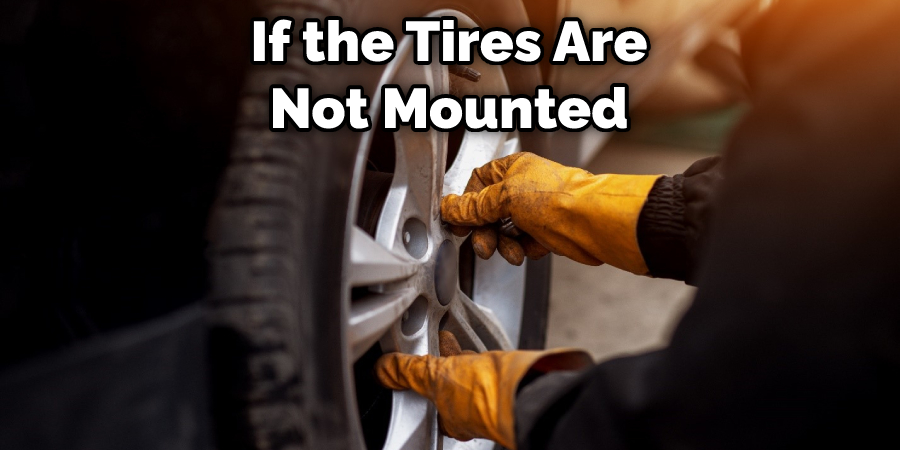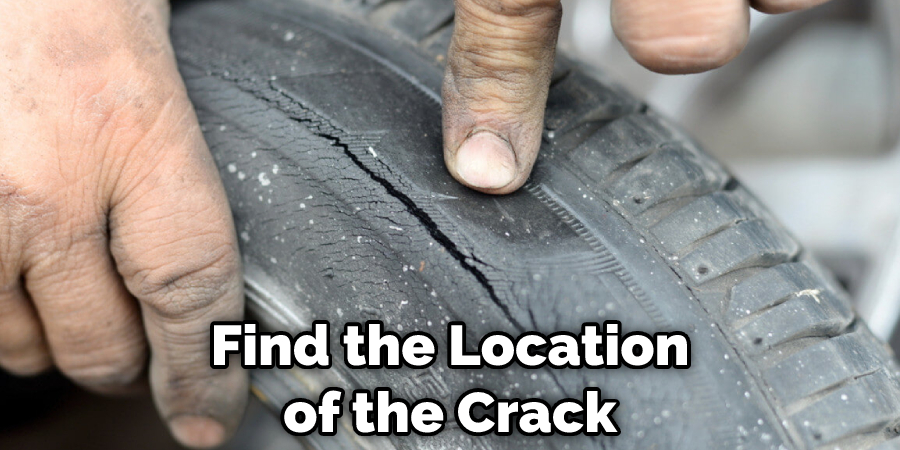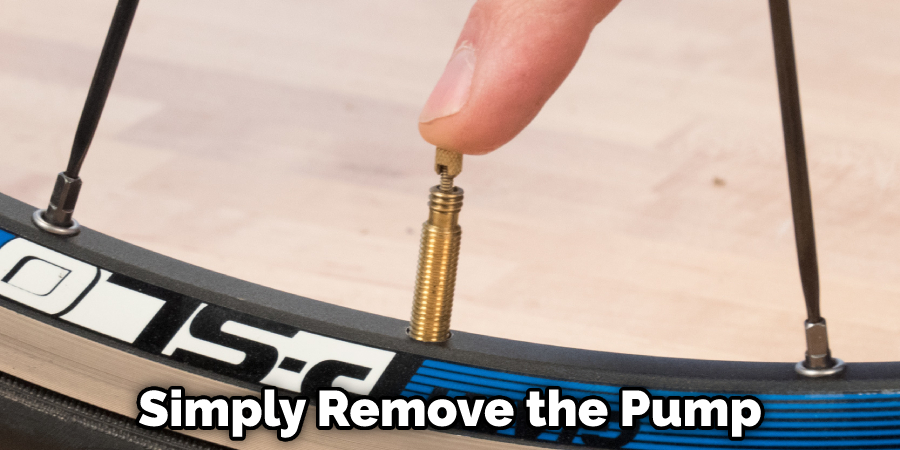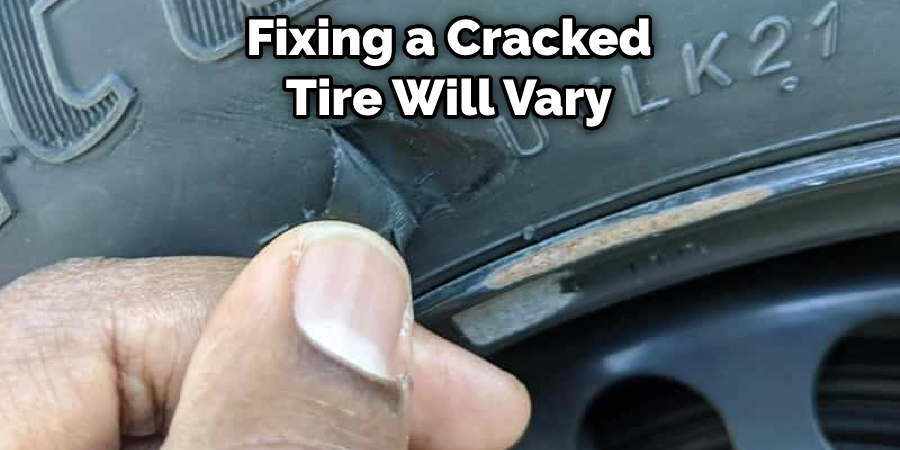If you have ever noticed that one of your tires has a crack, you may wonder what to do about it. It is important to fix cracked tires as soon as possible, as they can become a safety hazard. This blog post will discuss how to fix cracked tires We will also discuss some of the benefits of fixing cracked tires. Keep reading to learn more.

Summary: If your tire is cracked, you have a few steps to follow to get it fixed. Start by turning off the engine and removing the wheel. Then inspect the tire, clean the area around it, and use a repair kit to patch up any cracks. Once you check the pressure, re-inflate the tire and make sure to tighten the lug nuts. After that, lower the car and take a test drive to make sure everything is working correctly.
What Causes Tires to Crack?
Tires can crack for several reasons. The most common causes are:
Age
If your tires are more than six years old, they are more likely to develop cracks. This is because the rubber in tires dries out over time, making it more susceptible to cracking.
Sun Exposure
If your tires are regularly exposed to sunlight, they are also more likely to develop cracks. This is because the UV rays from the sun can cause the rubber to break down, making it more likely to crack.
Extreme Temperatures
If you live in an area with extreme temperatures, your tires are also more likely to develop cracks. Extreme cold or heat can cause the rubber in tires to become brittle and crack.
Poor Maintenance
If you do not properly maintain your tires, they are more likely to develop cracks. This includes things like not rotating your tires regularly or not keeping your tires inflated to the proper pressure.
Improper Installation
If your tires are not properly installed, they are more likely to develop cracks. This can happen if the tires are not mounted correctly or if the wheels are not properly aligned.

Driving on Rough Roads
If you regularly drive on rough roads, your tires are more likely to develop cracks. This is because the bumps and vibrations can cause the rubber to break down over time.
Things You Will Need
- Tire Repair Kit
- Tire Sealant
- Tire Pressure Gauge
- Rag
- Jack
15 Step by Step How to Fix Cracked Tires:
1. Turn Off the Engine
Before you begin, make sure to turn off the engine and set the parking brake. It is also a good idea to place a rag over the end of the tire repair kit to avoid getting any sealant on your hands. If you work in a well-ventilated area, you can also open the hood to help release fumes.
2. Remove the Wheel
Next, you will need to remove the wheel. To do this, loosen the lug nuts with a wrench. Then, jack up the car and remove the lug nuts completely. Finally, pull the wheel off of the car. If you are having trouble removing the lug nuts, you can spray them with WD-40 to help loosen them.
3. Inspect the Tire
Once the wheel is off, take a close look at the tire to find the location of the crack. If the crack is less than 1/4 inch wide, you can proceed to the next step. However, if the crack is wider than 1/4 inch, you will need to replace the tire. Tire repair kits are not designed to fix cracks that are wider than 1/4 inch.

4. Clean the Area
Once the crack is located, use a rag to clean the area around it. This will help the repair kit to adhere to the tire more effectively. To do this, wet the rag with water and wipe away any dirt or debris. If the rag is not wet enough, you can also use a mild soap to help loosen any stubborn dirt.
5. Apply the Repair Kit
Next, you will need to apply the repair kit to the tire. The kit should come with instructions on how to do this. In most cases, you will need to insert the tube of sealant into the tire and then use the pump to inflate the tire. Once the tire is inflated, you will need to wait for the sealant to dry. This can take up to 24 hours. If you are in a hurry, you can also use a hair dryer to speed up the process.
6. Check the Pressure
After the sealant has had time to dry, you will need to check the pressure. To do this, simply remove the pump from the tire and use a tire pressure gauge to check the pressure. The ideal pressure for most tires is between 32 and 35 psi. If the pressure is too low, you can add more air with the pump. If the pressure is too high, you can release some air by pressing the valve on the side of the tire.

7. Re-Inflate the Tire
Once the pressure is at the proper level, you will need to re-inflate the tire. To do this, simply insert the pump into the valve and inflate the tire to the proper pressure. Once the tire is inflated, you can remove the pump and replace the wheel.
8. Tighten the Lug Nuts
Once the wheel is back in place, you will need to tighten the lug nuts. To do this, use a wrench to turn them clockwise until they are snug. However, do not over-tighten the lug nuts, as this can damage the wheel. If you are not sure how tight the lug nuts should be, you can consult your car’s owner’s manual.
9. Lower the Car
After the lug nuts are tight, you can lower the car back to the ground. To do this, turn the jack handle counterclockwise until the car rests on its tires. Once the car is back on the ground, you can remove the jack. If the car is still not sitting level, you can adjust the jack until it is.
10. Test drive the Car
Before you put the tools away, taking the car for a test drive is a good idea. This will help you ensure that the tire is properly inflated and the repair is holding. If everything seems to be working properly, you can go ahead and put the tools away.
You Can Check It Out to Fix a Broken Tire Belt
How Much Does It Cost to Fix a Cracked Tire?
The cost of fixing a cracked tire will vary depending on the severity of the damage and the type of repair kit you use. However, in most cases, you can expect to spend between $10 and $20 on the materials. This does not include the labor cost if you have someone else do the repair for you. New tires can cost anywhere from $50 to $200, depending on the size and brand.

Tips and Warnings on How to Fix Cracked Tires:
Tips:
- Be sure to have the right tools. You’ll need a clean work area, a hammer, a screwdriver, and a tire patch kit.
- Inspect the tire for damage. If you can see any nails or other objects sticking out of the tread, remove them with the screwdriver.
- Use the hammer to tap the damaged area flat gently. Be careful not to make the hole any bigger.
- Apply the adhesive from the tire patch kit to the area surrounding the hole.
- Place the patch over the hole and press it firmly into place.
- Allow the adhesive to dry completely before driving on the tire.
Warnings:
- If the damage to your tire is severe, it’s best to replace it rather than try to patch it.
- Be careful not to over-inflate the tire after patching it. This can cause the tire to burst.
- Check your tires regularly for wear and tear, and have them replaced when they start to show signs of wear.
- Never drive on a flat tire. This can damage the tire and the wheel and can be dangerous. If you get a flat tire, Pull over to a safe location and call for roadside assistance.
- Don’t forget to check your spare tire regularly. A flat spare tire is no help when you need it.
Is It Safe to Drive on a Cracked Tire?
It is not safe to drive on a cracked tire. The damage to the tire can cause it to fail while you are driving, which can lead to an accident. If you have a cracked tire, it is best to replace it as soon as possible. It is also a good idea to check your tires regularly for any damage and have them replaced when they start to show signs of wear. While it may be tempting to patch a cracked tire, it is not worth the risk. A new tire is not that expensive and could save your life.
You Can Check It Out to Fix a Slashed Tire
Frequently Asked Questions
Can You Fix Cracks in Tires?
best way to repair cracks in tires depends on the severity and location of the crack. However, some general tips that may help include using a sealant or gasket material, adding pressure to the tire while it’s inflated, and replacing the entire tire if necessary. Make sure to consult with a professional when repairing cracks in tires – they will have specific instructions based on your individual situation.
What Causes Tire Weather Cracks?
Tire weather cracks are often the result of excessive wear and tear on your tires. As they are exposed to more friction, the rubber becomes brittle and begins to crack. This can happen quickly or over time, depending on how severe the wear and tear is.
There are a few things that you can do to minimize the risk of tire weather cracks: frequent rotation of your tires; proper inflation; keeping your wheels clean; using sturdy construction materials for your vehicle’s frame; avoiding harsh driving conditions such as heavy braking or accelerated cornering; parking in a safe place where you won’t hit obstacles head-on.
If you experience any signs of tire weather cracking – like black patches on your tires – then it is important to get them fixed as soon as possible so that damage doesn’t worsen further and ultimately lead to a blowout or other mechanical issue.
Is Flex Seal a Permanent Fix?
the condition and severity of a Flex Seal repair will vary depending on the damage. However, in general, Flex Seal repairs are considered to be temporary fixes and should be treated as such. That means that you should expect the sealant to eventually start failing again – most commonly within 6 to 12 months.
If you’re considering a Flex Seal repair, it’s important to understand the risks involved and make an informed decision. That way, you can make sure that your investment is worth your time and money.
What Is Better Flex Seal Spray or Liquid?
Both have their pros and cons, so it really depends on what you are looking for. Flex Seal spray is often considered to be more durable because the sealant remains constant even after repeated use.
This means that less dusting is required and fewer adjustments need to be made in order to achieve a perfect finish. Liquid also has the advantage of being faster-acting, but it can sometimes contain alcohol which may cause some damage if not used carefully.
Ultimately, the best way to find out which flex seal product works best for you is by trying them both out yourself
Conclusion
Now that you know how to fix cracked tires, there’s no need to worry about a flat tire while on the go. Follow these simple steps, and you’ll be back on the road in no time. If you have any questions, write a comment below and let us know. We’re happy to help! Please remember, driving on a cracked tire is dangerous and should be avoided. Happy driving.
